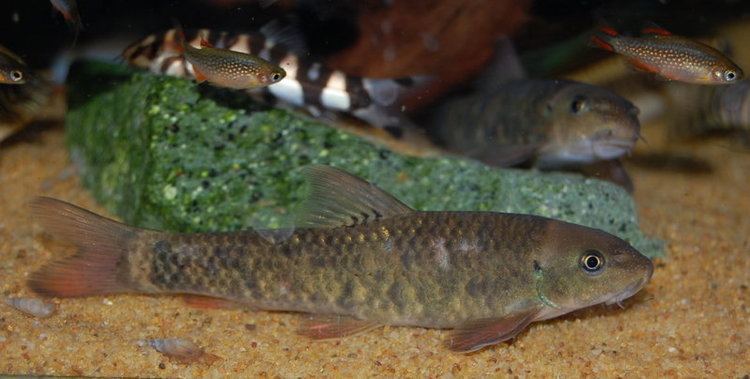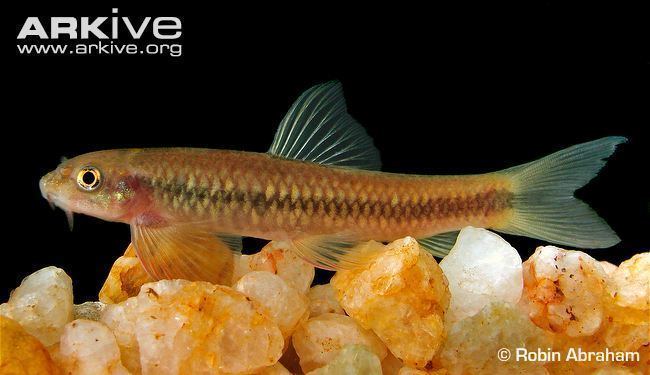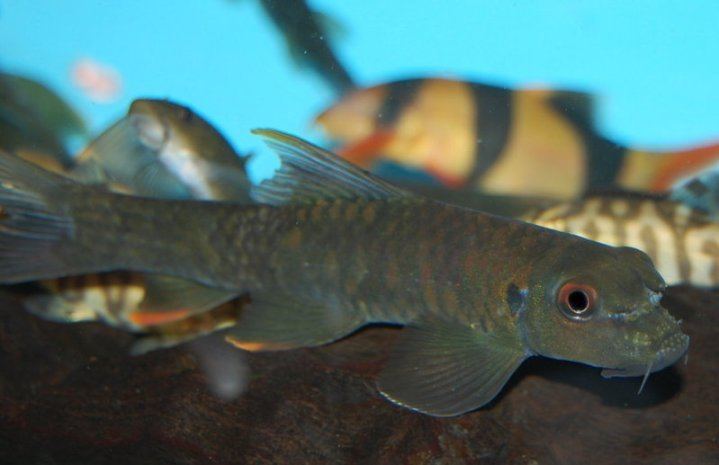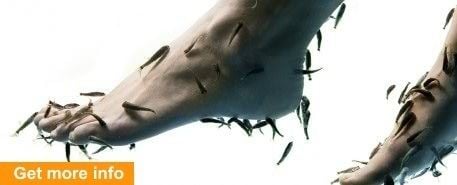Phylum Chordata Family Cyprinidae Scientific name Garra Rank Genus | ||
 | ||
Lower classifications Doctor fish, Garra flavatra, Cambodian logsucker, Garra typhlops, Garra barreimiae | ||
Doctor fish garra rufa awesome aquarium fish
Garra is a genus of fish in the family Cyprinidae. These fish are one example of the "log suckers", sucker-mouthed barbs and other cyprinids commonly kept in aquaria to keep down algae. The doctor fish of Kangal (Turkey) also belongs in this genus. The majority of the more than 140 species of garras are native to Asia, but about one-fifth of the species are from Africa (East, Middle and West, but by far the highest species richness in Ethiopia).
Contents

The genus was established by Francis Buchanan-Hamilton in 1822 as a subgenus of Cyprinus (which at that time was a "wastebin genus" for carp-like cyprinids); he did not designate a type species. But as no other garras except the newly discovered G. lamta were known to science in 1822, this was designated as the type species by Pieter Bleeker in 1863. The garras and their closest relatives are sometimes placed in a subfamily Garrinae, but this seems hardly warranted. More often, this group is included in the Labeoninae, or together with these in the Cyprininae. In the former case, the garras are members of the labeonine tribe Garrini, in the latter they are in the subtribe Garraina of tribe Labeonini. The genus Discogobio is a close relative.

Description and ecology

These species are slim cyprinids with a flat belly and a sucking mouth; their shape indicates that they are at least in tendency rheophilic. They are distinguished from other cyprinids by a combination of features: As in their closest relatives, their lower lip is expanded at its posterior rim to form a round or oval sucking pad, the vomero-palatine organ is much reduced or completely lost, the pectoral fins have at least the first two rays enlarged and usually unbranched, the supraethmoid is wider than long when seen from above, and the cleithrum is narrow and elongated to the front.

From other Garrini (or Garraina), the genus Garra can be distinguished as follows: their pharyngeal teeth are arranged in three rows (like 2,4,5–5,4,2), the dorsal fin has 10-11 rays and starts slightly anterior to the pelvic fins, while the anal fin starts well behind the pelvic fins and has 8-9 rays. As far as is known, the diploid karyotype of garras is 2n = 50.

Garras are not or barely noticeably sexually dimorphic and generally cryptically coloured benthic freshwater fish. Three species in the genus (G. lorestanensis, G. typhlops and some populations of G. barreimiae) are cave-adapted, lacking pigmentation and eyes. Garras are omnivorous, eating alga, plankton and small invertebrates that they suck off substrate like rocks or logs. The food is scraped off with the sharp keratinized borders of the jaws and ingested via suction, created by contracting and relaxing the buccopharynx. As typical for Cypriniformes, the garras lack a stomach entirely, their oesophagus leading directly to the sphincter of the intestine. Different Garra species eat animal and vegetable matter in different proportions, which can – as typical for vertebrates – usually be recognized by the length of their intestine compared to related species: more herbivorous species have a longer intestine. Indeed, intestinal length in this genus is remarkably constant within species and varies a lot between species, meaning that it is useful to distinguish species and that dietary shifts have played a significant role in the evolution of garras.

When the females are ready to spawn, they are markedly plum and swollen; the ripe roe may fill almost four-fifths of their body cavity. The testicles of reproductive males are large too. The average Garra egg is 1.77 mm in diameter and a clutch contains several hundred eggs – up to a thousand or so in large females. The breeding behaviour is generally not well known and breeding is not often achieved in the aquarium; presumably, like many of their relatives they migrate upstream or (if they otherwise inhabit lakes) into the rivers to spawn.
Species
There are currently 144 recognized species in this genus:
